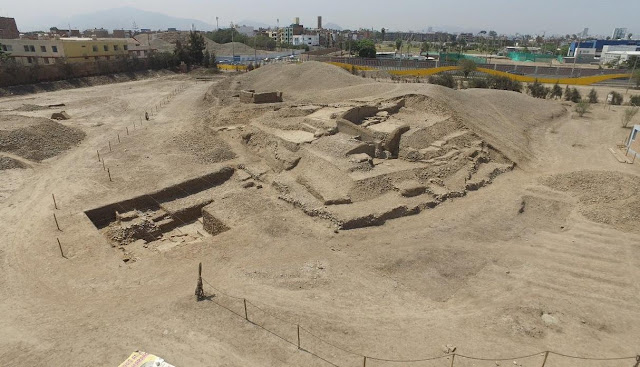A team of Peruvian archaeologists has found a 1,300-year-old pre-Hispanic cemetery near Lima's main zoo, a researcher said Friday.
 |
Credit: Diffusion |
The human remains, including two skulls belonging to the Peruvian culture (100-650 AD), were shown to the press by the researchers.
 |
Credit: Diffusion |
The remains, which belong to two adults and one child, were found more than a metre deep. In addition, archaeologists found an oven for ceramics, earthenware vessels and two 'piruros' or spindle whorls.
 |
Credit: Diffusion |
"At the moment we are also excavating a third adult burial, some of the bones of which can be seen protruding from the earth," she said.
 |
Credit: Diffusion |
The objects found in this park contain traces of three civilizations and are located in the archaeological complex of Maranga.
According to the archaeologist, the inhabitants of the Lima culture built the first structures in Huaca El Rosal.
In 2016, adobe walls and mud floors were discovered in the lower part of the huaca, and the walls of an oven between 400 and 500 AD.
"These findings are contemporary with the nine human burials found between 2016 and 2017," Carrión noted.
Source: El Pais [March 10, 2018]




